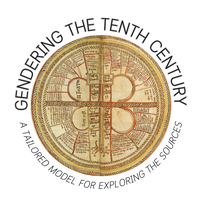
The PRIN project Gendering the Tenth Century aims to redefine the interpretative models that have long dominated historiographical reconstructions of the period known as the age of the "Italic kings," which spans from 888 to 962. These dates correspond to the death of Charles III "the Fat" and the imperial coronation of Otto I in Rome, marking the chronological boundaries of a historical phase traditionally associated with a time of great instability, profound crisis, and political decay. These factors were directly linked to the emergence of female dominance in the contemporary political scene of those years. In this context, recent research has highlighted the limitations and critical aspects of the paradigm that considers the rise of strong female figures on the political scene of the time as both evidence of the crisis and consequences of it. Gendering the Tenth Century contributes to overcoming this interpretative model through a new analysis of kinship, as well as the social and political structures, and their representation, especially through the overcoming of a “national” time-framing. Instead, it situates the 10th century in the Italic kingdom within the post-Carolingian context on one hand, and fully within the Ottonian context on the other .
The project analyzes a wide variety of sources. The central core of this corpus consists of 10th-century acts preserved today in the State Archives of Piacenza, the second-largest repository of early medieval documents in Italy. The information extracted from the analysis of the Piacenza charters will be studied together with other documentary series reflecting external contexts, such as Ravenna and Venice. This will help to compare different political, cultural, and legal traditions of the northern area of the kingdom. Studying a broad and coherent documentary corpus will allow the representation and the understanding of the structure of kinship, alliances between groups, and the specific roles attributed to women.
In addition, the project selects and examines various contemporary narrative sources to understand the cultural processes involved in shaping gender roles and depicting kinship relationships. This parallel approach, does not limit itself to consider the presence and role of women in the sources, but aims to provide a comprehensive analysis of gender construction, including masculinity.
The study of kinship ties, parental relationships, and gender representations uses an information processing system based on text markup through a hierarchical set of concepts specifically designed to describe the multiple realities of bonds between people with gender-related characteristics.